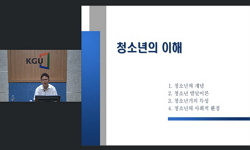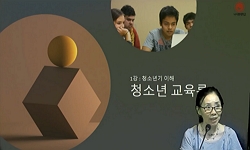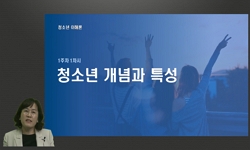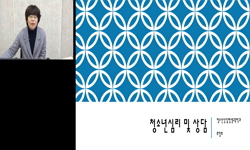This study aimed to identify the relationship of behavioral characteristics and the psychological types of the juvenile delinquents on probation (DJ) and normal juveniles (NJ), and then to develop and evaluate a program focused on helping psychologic...
http://chineseinput.net/에서 pinyin(병음)방식으로 중국어를 변환할 수 있습니다.
변환된 중국어를 복사하여 사용하시면 됩니다.
- 中文 을 입력하시려면 zhongwen을 입력하시고 space를누르시면됩니다.
- 北京 을 입력하시려면 beijing을 입력하시고 space를 누르시면 됩니다.
성격유형과 행동특성 비교분석에 따른 인식형 청소년을 위한 MBTI 심리교육 프로그램 개발과 효과 = Development and effect of MBTI psychoeducation program for the perceiving type adolescents based on the relationship between personality type and behavioral characteristics
한글로보기https://www.riss.kr/link?id=T7185947
- 저자
-
발행사항
부산 : 부산대학교 대학원, 1999
- 학위논문사항
-
발행연도
1999
-
작성언어
한국어
- 주제어
-
KDC
370.18 판사항(4)
-
발행국(도시)
부산
-
형태사항
v, 186 p. : 삽도 ; 27 cm.
- DOI식별코드
- 소장기관
-
0
상세조회 -
0
다운로드
부가정보
다국어 초록 (Multilingual Abstract)
Eighteen factors were chosen by factor analysis to examine the subjects´ distinctive behavioral features. The factors were father, mother, sense of alienation, stimulus-seeking, school adjustment, study stress, autonomy, smartness, delinquent
subculture, career planning, career confidence, disposition to commit delinquency, running away, assault, status delinquency, sexual abuse, general delinquency and drug abuse.
The results showed that in relation to psychological type. DJ subjects are more likely to be Extroverted. Sensing and Thinking than NJ subjects are. When 18 behavioral factors were examined. on 12 factors DJ group was found to have more negative attitudes than NJ group toward their families, schools, communities and themselves. There was no significant difference on 2 factors - sense of alienation and school adjustment. It was interesting to notice that NJ subjects were more negative on father, autonomy, career confidence and status delinquency.
The most interesting result of this study worthy of attention was the fact that the perceiving types in NJ group as well as in DJ group tend to have more negative attitudes and to be more vulnerable to misbehaviors than the judging types. This result was consistent with previous studies and suggested that effective programs should be developed to educate and guide adolescent perceivers for the prevention of youth crimes, since they are more susceptible to all kinds of adjustment problems in the society.
Due to the large behavioral difference between Perceiving preferred subjects and Judging preferred ones, SPs and IPs undoubtedly show more vulnerability than SJs. In comparison with other psychological types, SJs, STs and IJs seemed to have relatively more positive and healthy attitudes. Out of 16 psychological types. ESTJs and ESFJs were the most sound and well-adjusted, and ISTPs and INTPs, on the other hand, apparently tended to show the most negative attitudes un almost all the behavioral characteristics. DJ and NJ groups were pooled and divided again into two, high and low score groups, according to the number and the seriousness of their misbehaviors. The high score group was, by and large, similar to DJ group with regard to the relationship pattern between behavioral characteristics and psychological types, while the low score
group was similar to NJ group. These results suggested that psychological types supply the decisive device to describe and explain the distinctive features of adolescent behaviors and to sort out young persons liable to crime.
When a program was carried on trying to help psychologically vulnerable perceiving types to improve their ineffective adjusting behaviors, a significant short-term positive changes took place to them. Three reliable psychological scales were employed to check how much they have changed in a positive way ; Tenesse Self-Concept Scale.
Goal-Management Scale and Spielberger´s Trait Anxiety Inventory. The affirmative changes were obtained in several subscales of the Tenesse Self-Concept Scale, such as total positive self, self-identity, self-satisfaction, physical self, moral ethical self and personal self. Goal setting and Long-range planning were enhanced on the Goal-Management Scale. Trait-anxiety was moderately reduced on the Trait Anxiety Inventory. This result manifested that with the aid of properly designed programs, young people with Perceiving preference would become more satisfied with themselves and thereby come to have better self-concepts. As they become relatively free from the distressing anxieties, their energy may be more readily available to their goal achievements helping them to live better in the society. But in some sub-scales, there were no statistically significant differences between two groups, therefore some reformations are needed in the program content and procedure. Several suggestions and cautions in interpreting the experiment results and applying the program in the actual situations were mentioned.
This study aimed to identify the relationship of behavioral characteristics and the psychological types of the juvenile delinquents on probation (DJ) and normal juveniles (NJ), and then to develop and evaluate a program focused on helping psychologically vulnerable delinquents with P preferences (perceiving types) to adjust better in the society.
Eighteen factors were chosen by factor analysis to examine the subjects´ distinctive behavioral features. The factors were father, mother, sense of alienation, stimulus-seeking, school adjustment, study stress, autonomy, smartness, delinquent
subculture, career planning, career confidence, disposition to commit delinquency, running away, assault, status delinquency, sexual abuse, general delinquency and drug abuse.
The results showed that in relation to psychological type. DJ subjects are more likely to be Extroverted. Sensing and Thinking than NJ subjects are. When 18 behavioral factors were examined. on 12 factors DJ group was found to have more negative attitudes than NJ group toward their families, schools, communities and themselves. There was no significant difference on 2 factors - sense of alienation and school adjustment. It was interesting to notice that NJ subjects were more negative on father, autonomy, career confidence and status delinquency.
The most interesting result of this study worthy of attention was the fact that the perceiving types in NJ group as well as in DJ group tend to have more negative attitudes and to be more vulnerable to misbehaviors than the judging types. This result was consistent with previous studies and suggested that effective programs should be developed to educate and guide adolescent perceivers for the prevention of youth crimes, since they are more susceptible to all kinds of adjustment problems in the society.
Due to the large behavioral difference between Perceiving preferred subjects and Judging preferred ones, SPs and IPs undoubtedly show more vulnerability than SJs. In comparison with other psychological types, SJs, STs and IJs seemed to have relatively more positive and healthy attitudes. Out of 16 psychological types. ESTJs and ESFJs were the most sound and well-adjusted, and ISTPs and INTPs, on the other hand, apparently tended to show the most negative attitudes un almost all the behavioral characteristics. DJ and NJ groups were pooled and divided again into two, high and low score groups, according to the number and the seriousness of their misbehaviors. The high score group was, by and large, similar to DJ group with regard to the relationship pattern between behavioral characteristics and psychological types, while the low score
group was similar to NJ group. These results suggested that psychological types supply the decisive device to describe and explain the distinctive features of adolescent behaviors and to sort out young persons liable to crime.
When a program was carried on trying to help psychologically vulnerable perceiving types to improve their ineffective adjusting behaviors, a significant short-term positive changes took place to them. Three reliable psychological scales were employed to check how much they have changed in a positive way ; Tenesse Self-Concept Scale.
Goal-Management Scale and Spielberger´s Trait Anxiety Inventory. The affirmative changes were obtained in several subscales of the Tenesse Self-Concept Scale, such as total positive self, self-identity, self-satisfaction, physical self, moral ethical self and personal self. Goal setting and Long-range planning were enhanced on the Goal-Management Scale. Trait-anxiety was moderately reduced on the Trait Anxiety Inventory. This result manifested that with the aid of properly designed programs, young people with Perceiving preference would become more satisfied with themselves and thereby come to have better self-concepts. As they become relatively free from the distressing anxieties, their energy may be more readily available to their goal achievements helping them to live better in the society. But in some sub-scales, there were no statistically significant differences between two groups, therefore some reformations are needed in the program content and procedure. Several suggestions and cautions in interpreting the experiment results and applying the program in the actual situations were mentioned.
목차 (Table of Contents)
- 목차
- 제1장 서론 = 1
- 1. 연구의 목적과 필요성 = 1
- 2. 연구문제 = 6
- 3. 용어의 정의 = 7
- 목차
- 제1장 서론 = 1
- 1. 연구의 목적과 필요성 = 1
- 2. 연구문제 = 6
- 3. 용어의 정의 = 7
- 제2장 이론적 배경 = 9
- 1. 청소년 비행과 행동특성 = 9
- 2. 청소년 비행과 성격 = 14
- 3. 청소년 비행과 MBTI 성격유형 = 15
- 4. 청소년의 성격유형 = 22
- 1) 자아개념과 성격유형 = 22
- 2) 인식형 청소년 = 24
- 5. 인식형 청소년을 위한 프로그램 개발 = 27
- 제3장 연구 방법 = 40
- 1. 비행·일반청소년의 성격유형과 행동특성간의 관계 = 40
- 1) 연구대상 = 40
- 2) 측정도구 = 42
- 3) 자료의 분석과 통계처리 = 45
- 2. 비행상·하집단의 성격유형과 행동특성간의 관계 = 45
- 1) 연구대상 = 45
- 2) 자료의 분석과 통계처리 = 47
- 3. 인식형을 위한 심리교육 프로그램 = 47
- 1) 연구설계 = 47
- 2) 연구대상 = 48
- 3) 프로그램의 구성과 절차 = 50
- 4) 측정도구 = 54
- 제4장 결과 = 56
- 1. 비행·일반청소년의 성격유형과 행동특성간의 관계 = 56
- 2. 비행상·하집단의 성격유형과 행동특성의 결과 = 77
- 3. 인식형 프로그램의 효과 검증 = 91
- 1) 측정도구에 의한 양적 분석 = 92
- 2) 프로그램 결과의 질적 분석 = 95
- 제5장 논의 = 98
- 1. 일반·비행청소년과 비행상·하집단의 성격유형별 행동 특성 간의 관계 = 99
- 2. 인식형 프로그램 효과 검증 = 120
- 제6장 요약 및 결론 = 125
- 참고문헌 = 129
- 부록 = 143
- Abstract = 183












